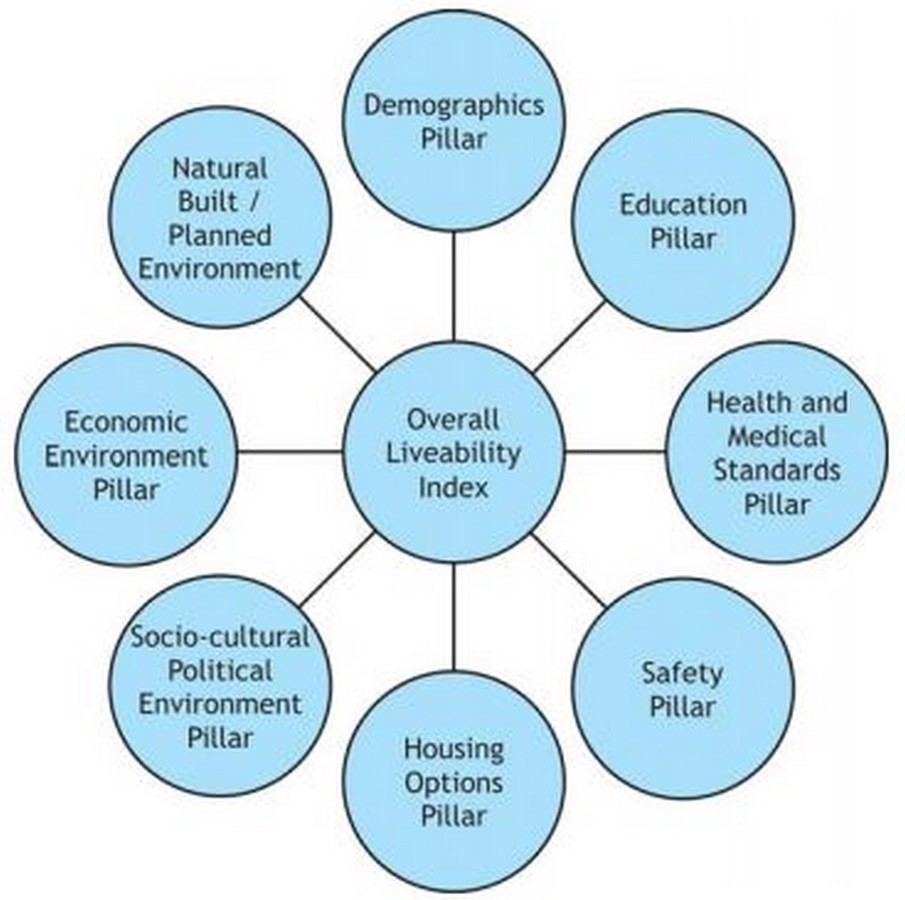How Does Architecture Contribute To The Livability Of Cities?

In order to achieve sustainability in the built environment, one crucial factor to consider is liveability. Liveability refers to the quality of life and well-being of people in a particular built environment. This includes factors such as access to basic amenities, social infrastructure, transportation, and other factors that make life comfortable and convenient. In this post, we will dive deep into the importance of liveability in achieving sustainable built, as well as the factors that contribute to liveability. Here are the key points:
Key Points:
1. Liveability affects physical and mental health
Living in an environment with poor liveability factors can have negative effects on both physical and mental health. For instance, lack of access to basic amenities such as clean water and sanitation can lead to the spread of diseases, which can have a detrimental effect on physical health. On the other hand, poor social infrastructure, isolation, and lack of community can lead to mental health problems such as depression and anxiety.
2. Economic sustainability
Liveability is important for economic sustainability as well. Cities and towns with high liveability attract businesses and investors, which in turn creates job opportunities, which is essential for economic growth. The quality of life offered by a city is a critical factor in attracting skilled professionals who will be contributing to the growth of the local economy and businesses.
3. Environmental sustainability
Liveability is also essential for environmental sustainability. A city or town that is designed with liveability in mind promotes efficient transportation systems, reduces energy consumption, and encourages the use of renewable energy sources. Additionally, it promotes green spaces and encourages the use of public transportation, thus reducing pollution levels, making the environment cleaner and sustainable.
4. Social sustainability
Liveability is also essential for social sustainability. A city or town that is designed to promote liveability creates a sense of community, encourages social interaction and brings people together. This sense of community and social interaction increases the quality of life and well-being of individuals living in that environment, creating a sustainable social structure.
5. Liveability is a complex concept
Liveability is not a single concept that can be defined or measured objectively. It is a complex and multifaceted phenomenon that can be influenced by various factors such as cultural norms, economic systems, and political climates, among others. However, there are several factors that are widely recognized as crucial for liveability. These include:
a. Access to basic amenities
Access to basic amenities such as clean water, sanitation, electricity, and healthcare is critical for liveability. Without these amenities, it is difficult to maintain a basic standard of living.
b. Housing
Affordable and comfortable housing is a key factor in achieving liveability. Housing should be designed to meet the needs of the individuals and families living in that environment, taking into account factors such as age, income, and family size.
c. Transportation
Efficient and sustainable transportation systems are essential for liveability. This includes public transportation, bike lanes, pedestrian walkways, and efficient roads and highways.
d. Social infrastructure
Social infrastructure such as community centers, schools, parks, and libraries are also crucial for liveability. These amenities provide opportunities for people to interact, learn, and grow together, leading to the creation of a strong sense of community.
e. Employment and economic opportunities
A thriving local economy and job opportunities are key factors in achieving liveability. This creates a sense of economic stability and security, which in turn promotes a better quality of life for individuals and families living in that environment.
6. The Liveability Index
The importance of liveability in achieving sustainable built environment has led to the creation of several liveability indices. One such index is the Liveability Index developed by the Confederation of Indian Industry (CII). The index measures the quality of life in Indian cities, taking into account several factors such as health, education, environment, public infrastructure, safety, and security.
FAQ
Q: Is there a single measure of liveability?
No. Liveability is a complex and multifaceted phenomenon that can be influenced by various factors.
Q: What factors are crucial in achieving liveability?
Access to basic amenities, housing, transportation, social infrastructure, employment and economic opportunities.
Q: Who developed the Liveability Index?
The Confederation of Indian Industry (CII).
Q: Why is liveability important?
Liveability is important for physical and mental health, economic sustainability, environmental sustainability, and social sustainability.
Q: How can a built environment become more liveable?
By taking into account the crucial factors of liveability such as access to basic amenities, housing, transportation, social infrastructure, and employment and economic opportunities. Additionally, creating a sense of community by promoting social interaction and green spaces is also crucial.
In conclusion, liveability is a crucial factor in achieving sustainability in the built environment. The well-being and quality of life of individuals living in a particular built environment should be a top priority for architects, urban planners, and policymakers. By taking into account the factors that contribute to liveability, we can create sustainable cities and towns that promote physical and mental health, economic sustainability, environmental sustainability, and social sustainability. This ultimately creates a sustainable built environment that benefits everyone.




Post a Comment for "How Does Architecture Contribute To The Livability Of Cities?"